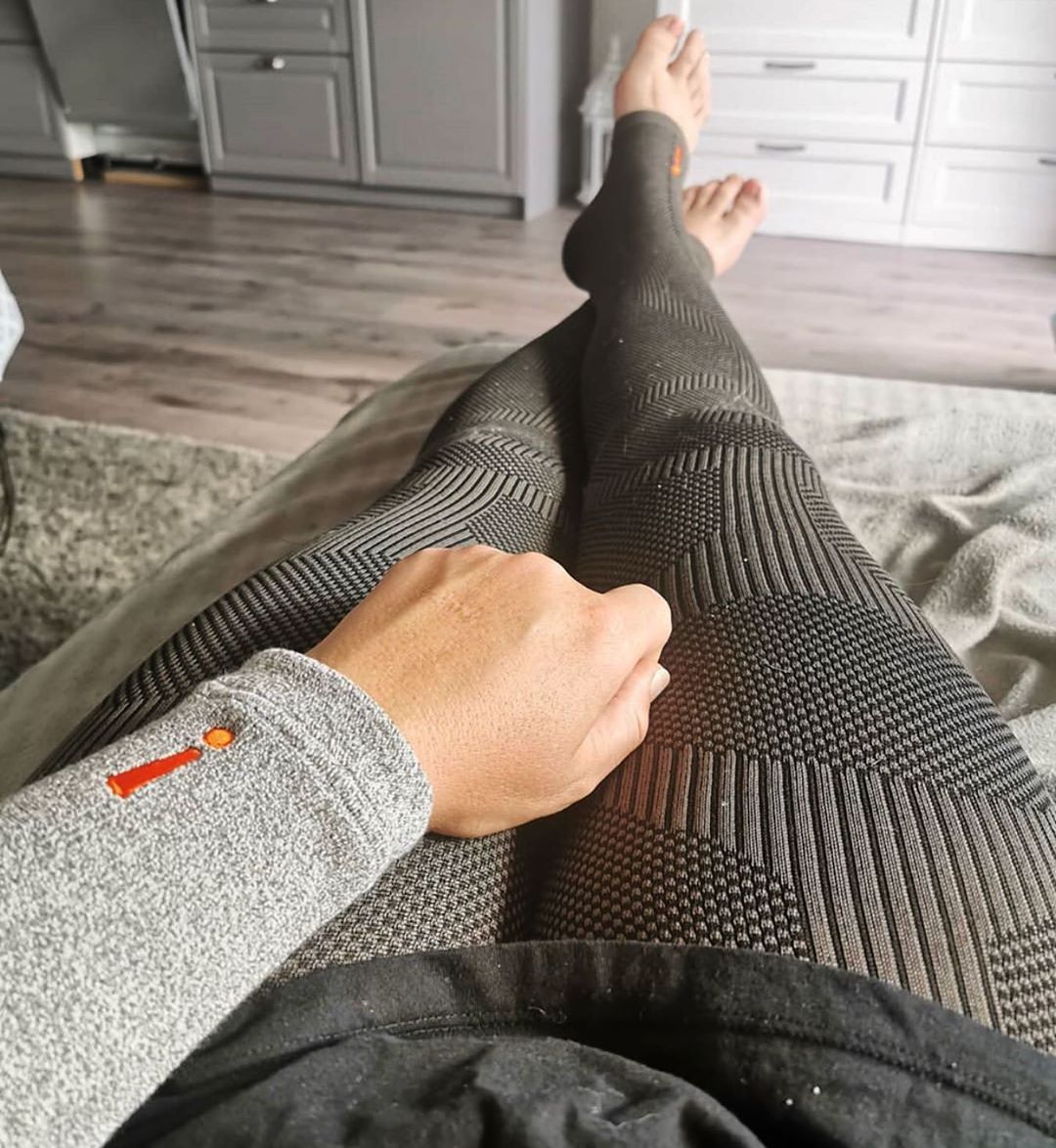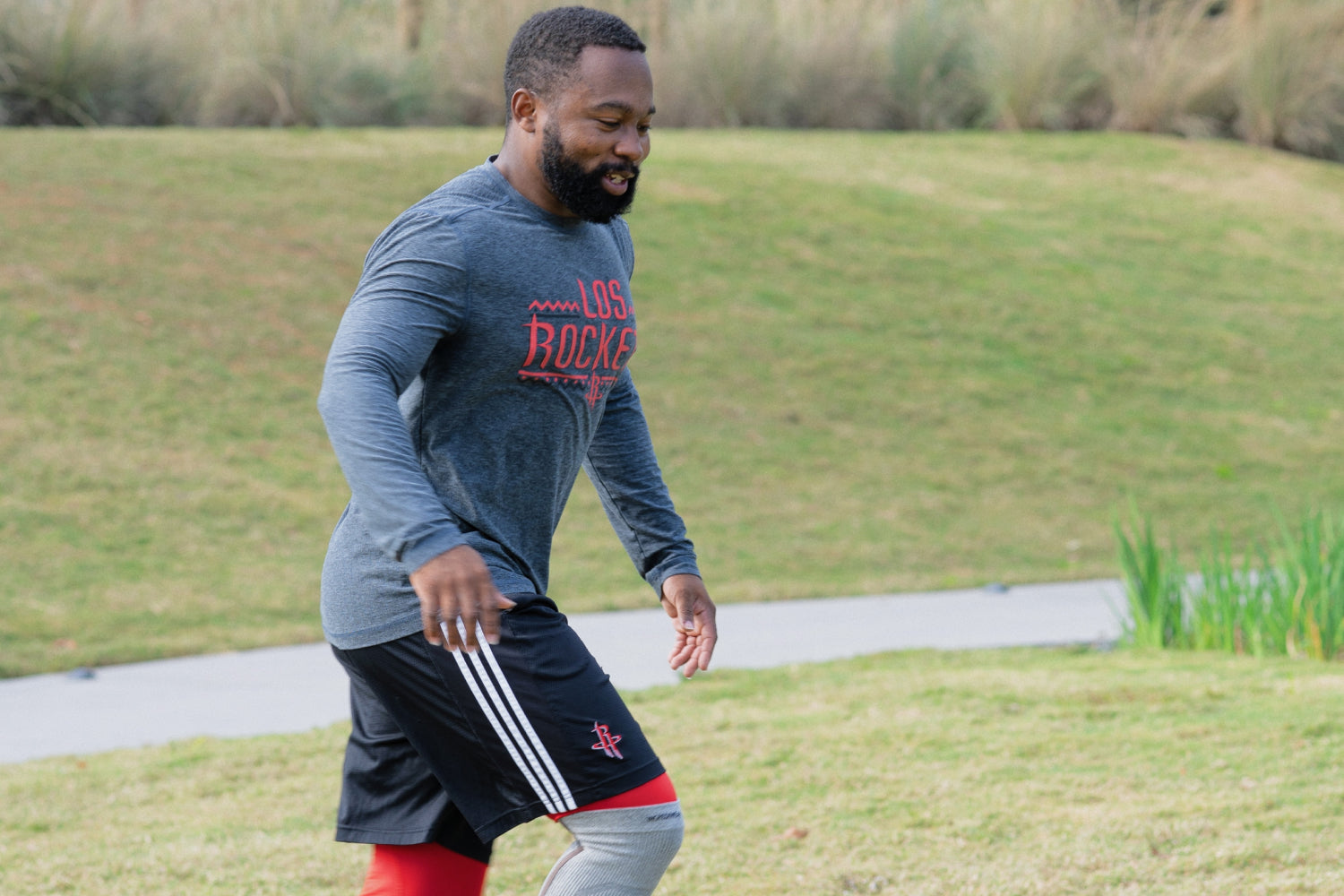Obstacle Course Racing (OCR) is a new, thrilling, and demanding sport, attracting enthusiasts worldwide. Participants navigate diverse challenges, combining physical prowess and mental resilience, making OCR a unique and exhilarating experience.
This Incrediwear guide will take a close look at how you can train for OCR and, importantly, how you can recover once you complete your first course.
What Does It Take To Do Obstacle Course Races?
Obstacle Course Races (OCRs) place extraordinary demands on athletes, requiring a dynamic blend of strength, endurance, and agility. The unpredictable nature of OCRs, featuring obstacles like walls, ropes, and mud pits, necessitates a well-rounded fitness approach.
Endurance is vital for covering varying terrains, while strength is important for conquering obstacles. Agility is the secret weapon, enabling swift navigation through challenges.
To excel in OCRs, athletes must hone these attributes, creating a holistic fitness foundation that empowers them to conquer each obstacle with finesse and determination.
What Are the Building Blocks of OCR Training?
Mastering obstacle course races (OCRs) requires a strategic and comprehensive training approach focused on key building blocks that elevate overall performance. This section dives into the fundamental elements of an OCR training plan.
Cardiovascular Fitness
A robust cardiovascular system is the cornerstone of OCR training. To enhance endurance and stamina, engage in high-intensity cardio workouts, such as running, cycling, or HIIT exercises. OCR courses often span various terrains, demanding sustained cardiovascular strength.
Strength Workouts
Targeting specific muscle groups crucial for OCR challenges is imperative. Incorporate strength training exercises like squats, deadlifts, and pull-ups to build functional strength. Emphasize both upper and lower body workouts, ensuring balanced muscle development.
Flexibility Exercises
Agile movement is key in OCRs. Integrate dynamic stretches and flexibility exercises to enhance joint mobility and reduce the risk of injuries during obstacle navigation. Yoga and mobility drills contribute to improved flexibility and range of motion.
Mental Resilience Training
OCRs test not just physical but mental fortitude. Integrate mental resilience training, simulating the mental challenges of OCRs in your workouts. Visualization, focus drills, and controlled breathing help fortify the mind against obstacles and fatigue.
Varied Workouts for Adaptability
Mimic the unpredictability of OCRs in your training routine. Include varied workouts that challenge adaptability and problem-solving skills. Interval training, agility drills, and functional movements mirror the diverse challenges participants face in OCR courses.
Avoid Progressive Overload
Implement a progressive training approach. Gradually increase your workouts' intensity, duration, and complexity to challenge the body and promote continuous improvement. This progressive overload ensures steady advancement in OCR-specific skills.
By incorporating these building blocks into your OCR training regimen, you’ll create a well-rounded foundation that enhances physical capabilities and prepares you mentally for the dynamic challenges that await on the obstacle course.
How Can You Personalize Your OCR Training Plan?
Crafting a personalized training plan is the key to OCR success. Tailoring your workouts to align with the unique demands of obstacle course races is the best strategy.
Here's a step-by-step guide to curating a plan that propels you toward victory.
Assess Your Current Fitness Level
Begin by evaluating your current fitness level. Assess strengths, weaknesses, and any specific areas that require improvement. This introspection forms the foundation for a targeted training approach.
Set Clear Objectives
Define your OCR goals. Whether aiming for completion, improvement in speed, or conquering specific obstacles, clear objectives guide the training plan. Objectives serve as benchmarks for progress.
Identify Specific OCR Skills
Identify the unique skills required for OCR success. Integrate exercises that mirror obstacle-specific movements. This includes grip strength for rope climbs, explosive power for jumps, and crawling techniques for low obstacles.
Establish a Weekly Schedule
Organize your training into a weekly schedule. Balance cardiovascular workouts, strength training, flexibility sessions, and rest days. Consistency is key; a well-structured routine fosters gradual progress.
Simulate OCR Conditions
Replicate the OCR conditions you find most difficult in your training. If possible, train in outdoor environments to adapt to varying terrains. Include elements like elevation changes, uneven surfaces, and unpredictable weather conditions to mimic race scenarios.
Integrate Rest and Recovery
Allocate dedicated rest and recovery days. Adequate rest is pivotal for muscle repair and overall well-being.
Incorporate techniques like foam rolling, stretching, and proper hydration to expedite recovery. If you ever feel pain anywhere, especially in sensitive regions like your knees, seek medical attention immediately.
Monitor and Adjust
Regularly assess your performance and adjust the training plan accordingly. Pay attention to feedback from your body, addressing fatigue or areas of discomfort. Flexibility in your plan ensures adaptability to evolving needs.
By tailoring your training plan to your specific strengths, weaknesses, and race goals, you set the stage for a purposeful and effective OCR preparation. This personalized approach optimizes your physical abilities and enhances your mental readiness for the challenges ahead on the obstacle course.
Why Is a Recovery Plan for OCR Athletes Important?
A well-thought-out recovery plan is integral for OCR athletes seeking sustained performance. Prioritize sufficient rest and quality sleep to facilitate muscle repair. Incorporate recovery tools like foam rollers and massage to alleviate muscle tightness.
Remember to stay hydrated and nourished to replenish energy stores, and always listen to your body's signals, adjusting training intensity as needed. A proactive recovery plan minimizes the risk of injuries and ensures you approach each OCR race with optimum physical and mental readiness.
How Can You Choose the Best Training Gear?
Elevate your OCR training experience by selecting the right gear. Prioritize breathable, moisture-wicking clothing for comfort during intense workouts, and choose supportive footwear designed for varied terrains to enhance stability.
Consider accessories like gloves for improved grip during obstacle challenges. The Incrediwear Knee Sleeve, known for its innovative design, can contribute to your training by providing targeted support without compromising freedom of movement. As you optimize your gear, ensuring a blend of functionality and comfort empowers you to tackle each OCR challenge with confidence and resilience.
Wrapping Up
When it comes to OCRs, a personalized training plan, mindful gear selection, and a diligent recovery strategy form the triumvirate for success. Embrace the challenges, tailor your preparation, and step onto the obstacle course with a well-equipped body and a resilient mindset, ready to conquer any hurdles in your path.
Links:
Stretching: Focus on flexibility | Mayo Clinic
Cardiovascular Effects and Benefits of Exercise | NIH
Physiological Demands of Extreme Obstacle Course Racing: A Case Study | NIH
Read more

Medically Reviewed By | Dr. Kate Panawash, PT, NCS, DPT Did you know while you sleep, you can recover even faster with Incrediwear? You're optimizing your body's natural recovery process by increas...

Medically Reviewed By | Dr. Kate Panawash, PT, NCS, DPT Most elite athletes know that working out is not the most important part of their training program. The best athletes understand that recover...






Leave a comment
All comments are moderated before being published.
This site is protected by hCaptcha and the hCaptcha Privacy Policy and Terms of Service apply.